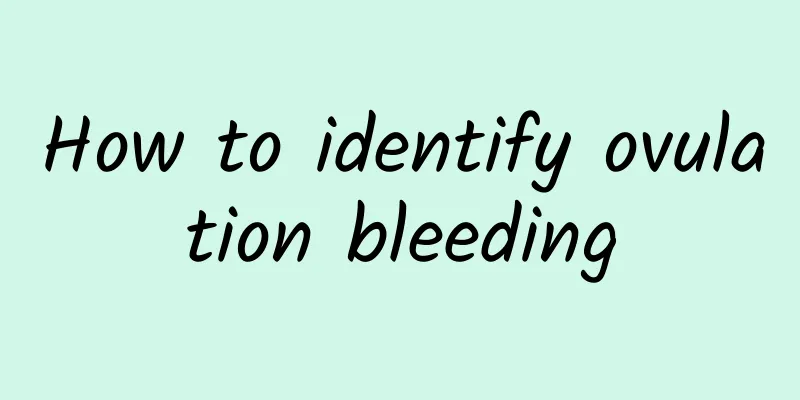How to identify ovulation bleeding

|
How to judge ovulation bleeding? Many people have asked this question. Many people who are preparing for pregnancy know how to calculate the period, but sometimes they find that they are clearly in the ovulation period, but they still have "period". Is this period or what? Today, the editor will tell you in detail. How to tell if it is menstrual bleeding or ovulation bleeding? First of all, we need to understand what ovulation bleeding is. In the middle of the menstrual cycle, that is, the ovulation period, due to a temporary drop in estrogen levels, the endometrium loses hormonal support and part of the endometrium falls off, causing regular vaginal bleeding, which is called ovulation bleeding. Traditional Chinese medicine calls it "intermenstrual bleeding". However, many women are not so keen on noticing bleeding during or even before and after menstruation. In fact, women usually ovulate about 14 days before the next menstrual period. To be on the safe side, we call the 5 days before and 4 days after ovulation, together with the ovulation day, a total of 10 days, the ovulation period. The rest of the time except the menstrual period is called the safe period. The duration of visible vaginal bleeding can be several hours, or 3 to 5 days, but rarely more than 7 days. In severe cases, it may continue until the next menstrual period. Some people bleed in very little amount, which stops with a few drops, or there is blood in the vagina. Generally, it rarely reaches the amount of menstruation. Bleeding may be accompanied by bloating and discomfort in the lower abdomen on one side, or dull pain or obvious pain, and even involve the waist and inner thigh. Symptoms may occur continuously every month or once every other month. Some people experience it for several months a year, and some people only experience this phenomenon once in their lifetime. Why does ovulation bleeding occur? In fact, every woman who is preparing for pregnancy may experience ovulation bleeding. Generally speaking, the amount of bleeding is very small and cannot be observed with the naked eye. However, some people will have obvious bleeding symptoms, and the severity cannot be generalized. Possible causes are as follows: 1. Hormone levels fluctuate too much. After ovulation, estrogen levels drop rapidly, causing the endometrium, which is proliferating under the influence of estrogen, to lose support and cause a little bleeding. 2. Chronic inflammation of the endometrium. This causes the endometrium to become congested during ovulation, or when ovulation occurs, blood vessels on the surface of the ovary rupture, causing more bleeding than normal and flowing back into the uterine cavity with the peristalsis of the fallopian tubes, and then discharged from the body through the vagina. |
<<: Typical symptoms of ovulation bleeding
>>: What medicine should I take for ovulation bleeding?
Recommend
Is it a big deal if you have chocolate cyst during pregnancy?
Chocolate cyst is a disease with a very high inci...
What are the causes of ectopic pregnancy?
What are the causes of ectopic pregnancy? Ectopic...
What to do if your menstrual cycle is long?
What to do if your menstrual cycle is long? Long ...
What are the triggering factors of cervicitis? In addition to miscarriage, there are two other causes
Cervicitis is one of the most common gynecologica...
Is moderate cervical inflammation cervical erosion?
Cervical erosion can be basically divided into th...
What are the obvious early symptoms of irregular menstruation?
Irregular menstruation is a gynecological disease...
What to check for cervical erosion
Cervical erosion can be checked through gynecolog...
Slimming and light meals are popular: low-fat and high-fiber shrimp paste
The obesity rate among modern people is rising du...
How to prevent ovarian cysts in women
At present, ovarian cysts are a common female dis...
Will ectopic pregnancy repeatedly attack patients? What is the reason for repeated ectopic pregnancy?
Some women found out they were pregnant shortly a...
What medicine can stop menstruation?
Drugs that stop menstruation do exist, but they n...
Understanding the causes of bacterial vaginosis bleeding
Bacterial vaginitis not only causes vaginal itchi...
How long after an abortion can I get an IUD inserted? Are there any requirements for inserting an IUD?
For women, after a painless abortion, choosing an...
Home care measures for cervical erosion
Bacterial infection is one of the causes of cervi...
Obesity and loose skin are bothering us, but do we know about their complications? Healthy body sculpture management is supervised by a professional medical team
Obesity and excess skin are common health issues ...









